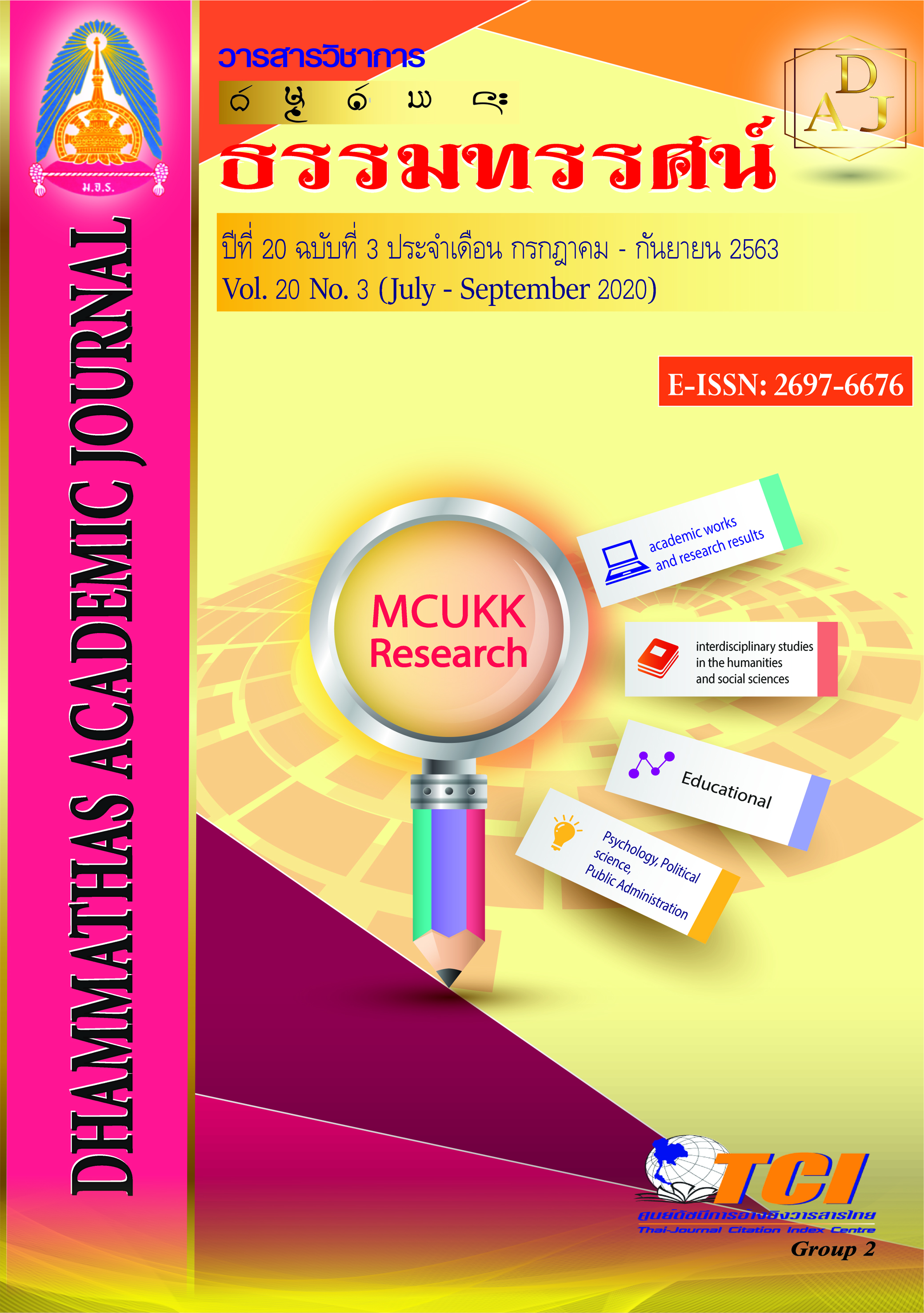The Behavior of Characters The Study of Causes Leading to Persuasive Speech from The Behavior of Characters in Novels “Sam Phao Thong” by Praphassorn Sevikul
Main Article Content
Abstract
The objective was to study of causes Leading to persuasive speech from the behavior of characters in novels “Sam Phao Thong” by Praphassorn Sevikul, by selecting the persuasive dialogues that occurred between 2 or more characters. Speak, persuade, or interact with each other to convince the other party to conform. That finally led to the peace and calm. The researcher collected 78 persuasive dialogues. Then identified the cause of persuasion and then analyzed the results of the negotiations.
The results showed that: the cause of persuasive speech from character behavior, It can be divided into two aspects: positive and negative. 1) The positive side is the persuasive speaker with cause and effect. Try to understand empathy for the audience. 2) The negative side is that the speaker persuades the desired behavior to overcome. To make the other person comply with feelings of suffering or pain. Positive 10 factors: Descending order is self-defense, self-respect, independence, understanding, friendship, respect to other, control or domination, fondness, surrender to fate, assistance offering. Persuading people to use positive reasons as the most negotiated alternative. Negative 3 factors: patronage, reaction expression, aggressiveness. It is used as the least negotiated alternative.
Article Details
References
Kaeokangwan, S. (2011). Personality psychology theory. Bangkok : Moh chao ban publishing house.
Ma, Y. (2011). Alternative: Reflection of Chinese-Thai society in the novel of Prabhassorn Sevikul. Master of Arts. Graduate School : Huachiew Chalermprakiet University.
Meekoom, N. (1996). An Analysis of the viewpoint on women’s role in Prapatson sevikun’s novels. Master’s thesis. Graduate School : Ramkhamhaeng University.
Monsaeng, P. (1995). Types and negative behavior of main characters in the novels written by M.L. Srifa Mahawan. The report is based on conferences, presentations of national and international research. Graduate studies in Northern Rajabhat Universities.
Mookham, T. (2016). Discourse on Human Resource Development in the ASEAN Literature of Praphatsorn Sewikul. Journal of Education Thaksin University, 16(2), 28-42.
Nakkasem, D. (2002). An Analytical study of Prabhassorn Sevikul’s Novels. Master’s thesis. Graduate School : Naresuan University.
Nantachantoon, S. (2009). Phrases in non-fiction literature: a case study of Thomyantee’s novels. Manutsayasat Wichakan Journal, 16(1), 76-88.
Pantakengamon, T. (1996). Writing for communication. Faculty of Humanities and Social Sciences, Songkhla Rajabhat University. Songkhla : Thai department.
Phongprayoon, U. (1993). An analysis of envious female characters in the modern Thai novels published during B.E.2516-2532. Master’s thesis. Graduate School : Srinakharinwirot University.
Sevikul, P. (1998). Sam Phao Thong. Bangkok : Nanmeebooks.

